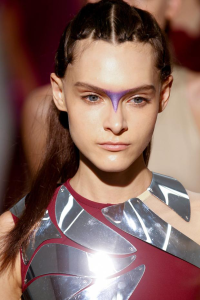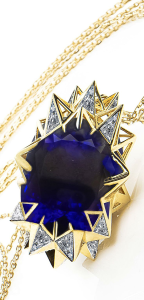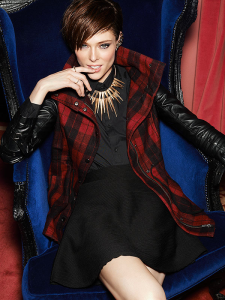Rania Sedhom Managing Partner of the firm Sedhom and Mayhew, PLLC (A Bespoke Law Firm) is an attorney who represents a number of clients in the fashion and jewelry industries who have a vested interest in 3D printing. According to her website, Rania is a “skilled legal and business commentator with appearances on national print and TV media, including the L.A. Times, the Chicago Tribune, the Baltimore Sun, Forbes, Inc., Business Week, and CNN Money.”
She recently was invited to speak at the Inside 3D Printing Conference in Santa Clara, and the title of her talk was “3D Printing and its Effect on the Fashion Industry: Vendor Agreements, Supply Chain, Customer Experience and More”.
During the course of her presentation, Rania laid out some current uses and examples of 3D printed fashion and jewelry, discussed some advantages and disadvantages for the fashion industry, and discussed some of the open and currently unanswered legal questions about the effects this technology is having and will have in the years to come.

I had the good fortune of speaking with her last week, and she was kind enough to take time from her busy schedule to elaborate on her presentation and discuss 3D printing.
A: Fashion and 3D printing. Why are the bigger fashion companies afraid of 3D printing fashion?

Rania: Certain preeminent fashion brands are concerned about people using their 3D printers at home to create copies of their designs. The brands that are most comfortable with 3D printing right now are jewelry brands. Mainstay brands won’t embrace 3D printing until it’s too late. Higher end brands are going to truly embrace 3D printing when they figure out how they can use it to provide exclusive pieces that are custom made. A regular bag can cost $3500, but if you go into a high-end store, and they have you in their customer database, they can custom make pretty much anything you want. You can say, “I know you don’t have this bag in purple, but that’s what I would like.” And they can customize it, but they will mark it up quite a bit. Usually the markup is so high, that I find myself saying, “You know, I might as well just get something that they already have (laughs).
A: Do you think the customization possibilities offered by 3D printing could reduce the amount of that type of huge markup on a personalized bag?
R: I don’t think it’ll disappear; however, the type of market may change. The reason that the markup is so huge in this particular case, is because they are just creating one piece, as opposed to say, 500 hundred of them. Also, there’s a lot of material waste to make up for it. But I think that when you go to some of these higher end brands, it won’t be so easy for you as a customer to get the same textile.

It’s very hard to get certain materials, such as high quality leather, crocodile etc. You can’t really walk into a fabric or material vendor, and ask for a small amount of material such as 1 square yard, for example. The brands will mark up this type of customization because of the scarcity and value of certain high-end materials.
A: What would you say is your overall message to the fashion industry with respect to 3D printing?

R: 3D Printing isn’t really going to away. If you don’t use it to your benefit, you might get left behind. But more importantly, if you don’t truly embrace the technology and understand it, you can’t mitigate the risks associated with its effects on your industry. I’m working with a client that allows you to customize clothing and some accessories. When a customer alters the design, who then owns the design? In this case, because I’m their lawyer I included Terms of Service on their website which specify that any design that people customize is still the property of my client.

Among Rania’s clients are Baublebar, an e-commerce jewelry business which recently raised 10 million dollars in series B funding led by Burch Creative Capital, as well as John Brevard, a phenomenal artist and designer who 3D prints his entire jewelry line, and Threeasfour, trio of artists who run an avant-garde fashion collective. Rachel Park, our editor-in-chief covered their fascinating exhibition at the Jewish Museum in New York City about a year ago. Rania and Gabi Asfour of the collective are collaborating and have created a course about design, fashion and 3D printing.
If you would like to get in touch with Rania, please email her at: [email protected].


